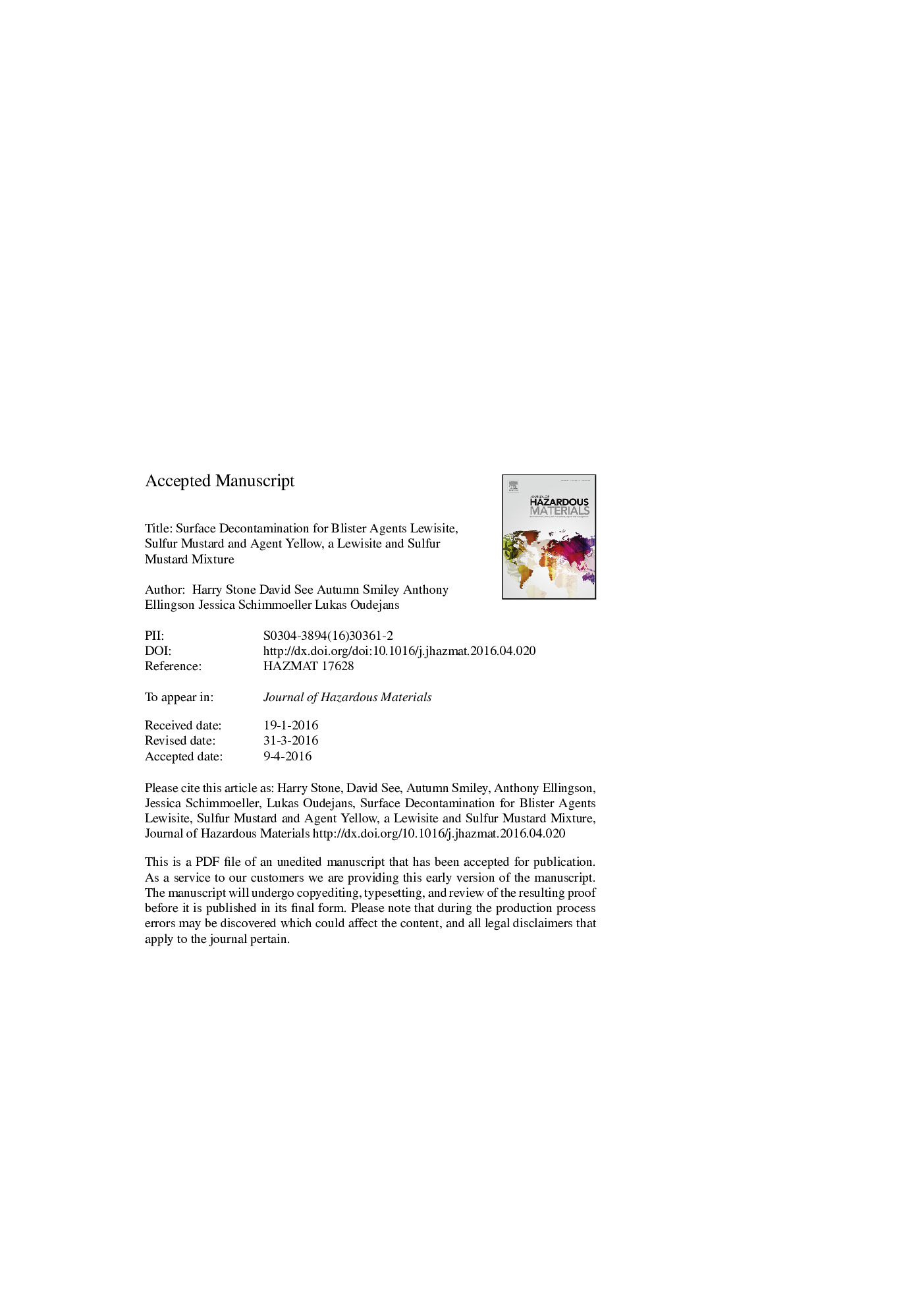| Article ID | Journal | Published Year | Pages | File Type |
|---|---|---|---|---|
| 6970372 | Journal of Hazardous Materials | 2016 | 37 Pages |
Abstract
Sulfur mustard (HD) and Lewisite (L) are blister agents that have a high potential for terrorist use; Agent Yellow (HL) is the eutectic mixture of HD and L. Bench-scale testing was used to determine the residual amount of these chemical warfare agents remaining on three building materials (wood, metal and glass) after application of various decontaminants (household bleach, full strength and dilute; hydrogen peroxide 3% solution; and EasyDECON® DF200). All decontaminants reduced the amount of L recovered from coupons. Application of dilute bleach showed little or no difference compared to natural attenuation in the amount of HD recovered from coupons. Full-strength bleach was the most effective of four decontaminants at reducing the amount of HD from coupons. Hydrogen peroxide (3% solution) and DF200 did decrease the amount of HD recovered from coupons more than natural attenuation (except DF200 against HD on metal), but substantial amounts of HD remained on some materials. Toxic HD by-products were generated by hydrogen peroxide treatment. The effectiveness of decontaminants was found to depend on agent, material, and decontaminant. Increased decontaminant reaction time (60Â min rather than 30Â min) did not significantly increase effectiveness.
Related Topics
Physical Sciences and Engineering
Chemical Engineering
Chemical Health and Safety
Authors
Harry Stone, David See, Autumn Smiley, Anthony Ellingson, Jessica Schimmoeller, Lukas Oudejans,
